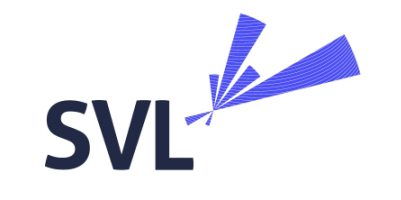A new era for Workforce Management in the contact centre – As we get to grips with our new working reality, Anne Holmes, SVL’s Workforce Management specialist, looks at what happened in the arena of Workforce Management in the last 2 years, and where we are going next.
 I didn’t think, two years ago, that we would have been on this journey. In the arena of Workforce Management in our Contact Centre industry, we have seen our people, and our software, stretched but remaining robust, even under the most challenging circumstances.
I didn’t think, two years ago, that we would have been on this journey. In the arena of Workforce Management in our Contact Centre industry, we have seen our people, and our software, stretched but remaining robust, even under the most challenging circumstances.
WFM systems were put to the test, and, in particular, the enterprise-grade solution (NICE and Calabrio are examples of outstanding enterprise solutions that SVL work with), passed with flying colours. The swift movement to homeworking needed flexibility and the top-level products bent and shaped to meet the crisis.
But there were lessons to be learned. Often we learn more from defeat than victory and it is worth examining problems and their root cause.

Telephony buckled
What many organisations quickly found was that their telephony infrastucture could not stand up to the instant migration to homeworking. The more simple telephony systems were not designed to cater for 100’s of staff working from the their kitchen and had to be quickly augmented or replaced.
Channel-shifting
Both to combat telephony issues and meet the growing trend towards omni-channel communications, we saw the integration of webchat/social/messaging channels of communication with voice, not only for external communications but also for planning and internal communications. WFM software flexed to embrace these digital channels in terms of managing in and outbound chat in a way seldom seen before. As mirrors the outside world, people would rather message than chat and this became a necessity in WFM.
Scenario Planning
Planning using spreadsheets was still fairly common in the Contact Centre world, as covid arrived. The sophisticated requirements of hybrid-working, which is now daily life for a planner, made those using spreadsheets aware of the need for a WFM solution that could allow for scenario planning as well as deal with the new reality. We saw an upsurge in interest in enterprise solutions which could cater from a wide spectrum of centres, from as little as 20 users to thousands of seats.
I would say, though, that every WFM solution did not work instantly “out of the box”. The inventiveness of consultants like our experienced team at SVL, was tested, but they showed that even the highest profile software isn’t rigid and there is room for flexibility and agility in each WFM solution to provide the customer with something which is bespoke to them.
So what next?
Well we continue to live in our new reality and, if we have learned anything at all, it is to scenario plan for as many eventualities as possible. What you may also notice is that much of what I have talked about; Telephony, WFM software, omni-channel comms is actually a set of resources which now intergrate in a way they never did before. CCaaS (Contact Centre as a Service) solutions blend all these tools in one consumption-based cloud contact centre saving huge amounts of money and time and I would be happy to have a chat if you’d like to know more.
Having had two successful events in 2019, I aim to revive our WFM Networking Group over the summer, leading to an in-person conference in Autumn 22, where our community of practice can meet, share ideas and discuss common problems.
I look forward to meeting you all, in person, again soon.
![]()
 SVL has been based in East Kilbride for over 50 years and is the longest serving provider of software and consultancy to the Contact Centre Industry. SVL has over 40 staff.
SVL has been based in East Kilbride for over 50 years and is the longest serving provider of software and consultancy to the Contact Centre Industry. SVL has over 40 staff.
For additional information on SVL View their Company Profile




